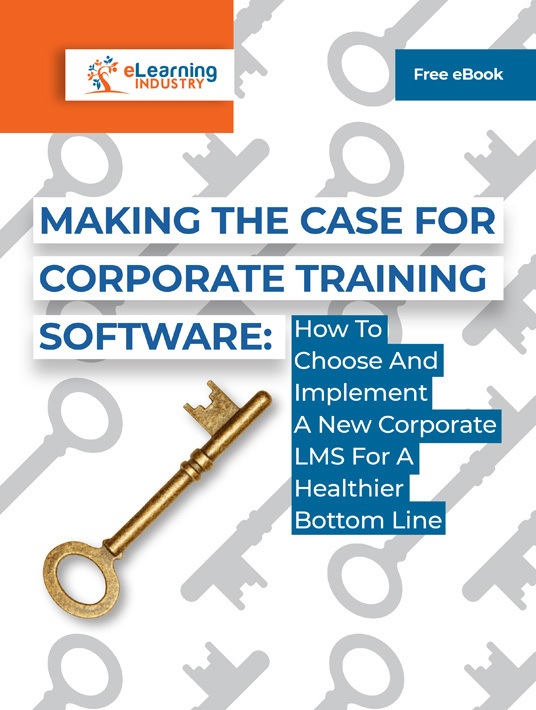Which Are The Costs You Should Consider When Implementing LMS Corporate Training
In what ways does LMS minimize your training and administration budget? Well, it’s generally a one-off expense, or nominal monthly fee, that can be repurposed to future employees. And it covers extra requirements besides training. A good LMS can create in-house courses, track performance and enforce compliance initiatives. Other things your LMS can do are monitoring organizational assets and impart valuable real-world experience so that employees are prepared for any kind of work-related challenge. But what are some of its hidden costs? Here are 5 LMS corporate training budget breakers to consider when implementing your new system.

1. Content Development
If you’ve worked as a consultant or contractor, you know you can demand far higher fees. The justification is usually that your skill-set is more advanced. Or your work is temporary, so the higher pay is a ‘tax’ on -the lack of- job security. This means you could be hiring a content consultant for a few days, weeks or months. It could cost more than paying in-house content managers for a year. So, when you decide to invest in LMS corporate training, think about the courses you intend to offer. Then, before you make the purchase, see if you have the right subject experts in-house. Since they’re already on a salary you might offer them a bonus for taking on the extra work. Or promote them to a managerial role. It’s still cheaper than a skilled temp.
2. Per-Usage Overage Fees
Of course not all Learning Management Systems require a hands-on backend development. You could buy a more ‘finished’ product that has its own tech. A training solutions provider, for example, leaves most of the work in your vendor’s hands. They may have their own designers, developers and content team. You, as the customer, simply state your requirements, then receive a complete package. Your primary task at this point will be to create user profiles. Your staff will log in and find everything they need ready to go. This type of LMS corporate training usually comes as a blanket product and you pay a set fee for each new user profile. This is fine when you have 10 or even 15 users so it works for start-ups and boutique firms. But as you establish your business, over time you might expand your staff to say, 100. Then it stops making financial 'cents' and it’s time for plan B.
3. Initial Set-Up Price
Another cost you won’t hear much about is your installation fee. A standard plug-and-play LMS doesn’t need special skills to set-up. You just got to the URL and log in. Or if it’s a mobile app, you can send your team a download like via email or intranet. Yes, they’ll see a social media link faster, but it could be a security risk because it’s not internally encrypted. On the other hand, if it’s a system that has to be manually uploaded, the price goes up. It means your vendor’s techies have to come in and deal with each individual device. This may happen over the weekend or after hours when computers are not in use. This fee can sometimes reach thousands of dollars. You might also have to buy dedicated servers or compatible new devices. The subscription model is monthly or annually.
4. Potential IT Costs
When your accounts department sees an installation figure of $5,000, they may suggest you use open source instead. After all, that would essentially be free. But they require a skilled IT person to structure them. Think of it this way. Buying a refined LMS is like buying a rubber stamp or wax seal. Contrarily obtaining open source is like getting a calligraphy pen for your birthday. Before you can use the ‘free’ pen to verify documents and letters, you have to buy ink and perfect your signature. This signature has to be complex enough that it can’t be forged. But consistent enough that it’s valid in every document you sign. Also, you may have to take a pricy cursive class… think about it!
5. Learning Curve Costs
Most organizations think about the monetary investment involved when investing in an LMS corporate training solution. But what about the time it takes for your team to familiarize themselves with the new system? The backend users who need to use the tool to develop and deploy training. As well as frontend users who must access the corporate LMS to get the training resources they require. This time take a bite out of your payroll and LMS budget in order to improve functionality. It makes little sense to invest in a new platform, only to conserve and save when it comes to the acclimation process.
Every type of LMS has costs associated with it, even the allegedly free ones. Sometimes, those unpaid products end up being more expensive than the ones with printed price tags. Where are the areas where your budget can be involuntarily stretched to the point of breaking? If you have to bring in external Subject Matter Experts or programmers, your course is no longer free. Do a staff audit to confirm the skill-sets available in your company and let that inform your LMS selection. Initial set-up costs, subscriptions per user and licensing can also add unplanned fees, depending on the number of users. Sit with your training team, IT people and accountant. Run through all these potential pricing problems, then pick a course of action that works for everybody involved. After all, planned costs are workable. It’s the hidden surprises that really shake things up.
Getting new hires into the flow of your work-place is an essential corporate undertaking. How can you be sure you get it right? Download our eBook Making The Case For Corporate Training Software: How To Choose And Implement A New Corporate LMS For A Healthier Bottom Line and discover all you need to know so you can choose and implement a new corporate LMS.

